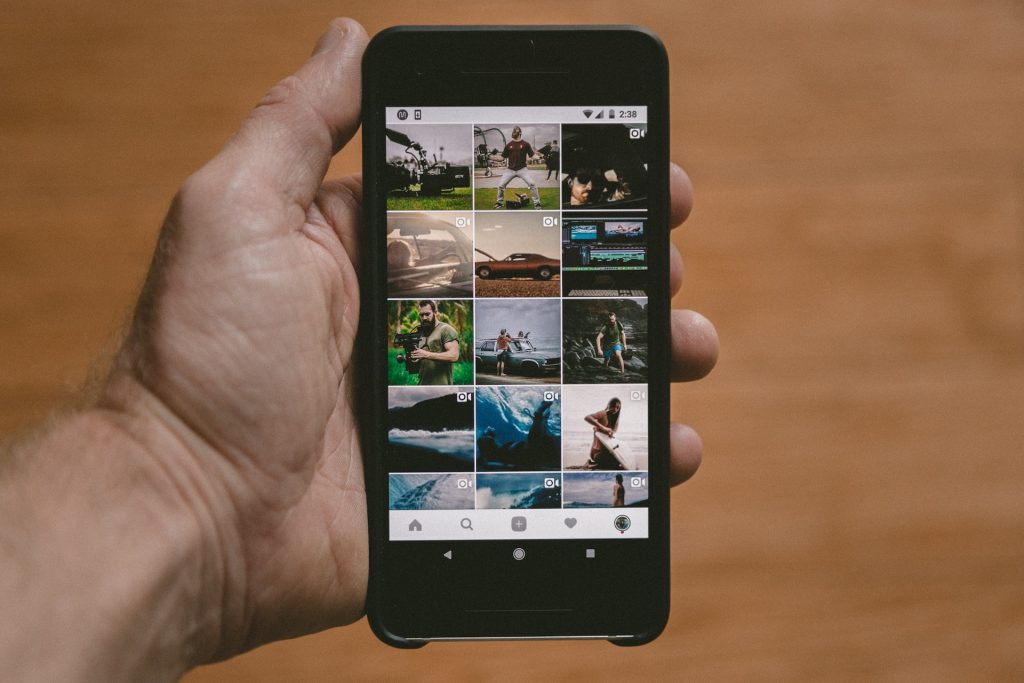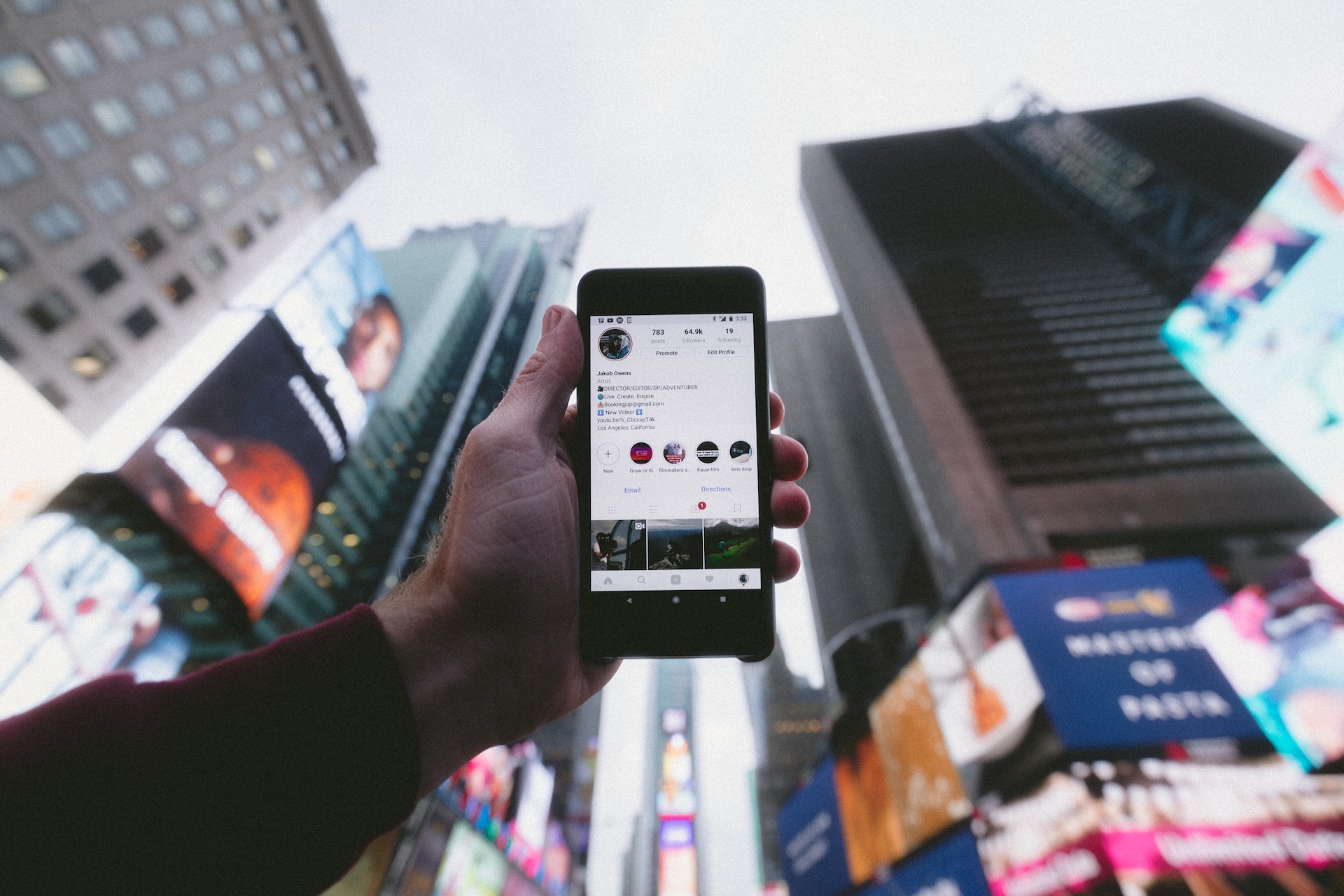In modern marketing, brands are constantly seeking innovative ways to connect with and captivate their audience. These strategies blend creative insight with practical tactics, covering a spectrum from leveraging online platforms to establishing meaningful audience relationships. Suitable for both emerging start-ups and established companies, this guide offers a roadmap to navigating the multifaceted world of contemporary marketing, ensuring your brand not only stands out but also flourishes in today’s competitive marketing world.
Reasons Why Instagram Ads Are Important for Brand Growth

- Expansive Audience Reach: Instagram’s massive, diverse user base presents brands with the opportunity to reach a wide array of demographics, essential for increasing brand visibility and audience.
- High Engagement Levels: Users on Instagram are notably more engaged with content than on other social media platforms. This heightened engagement leads to increased visibility and interaction with brand advertisements.
- Visual Storytelling: Instagram’s focus on visual content allows brands to craft visually striking ads that can capture and hold the audience’s attention more effectively than traditional text-based advertising.
- Sophisticated Targeting Capabilities: Leveraging Facebook’s advanced advertising system, Instagram provides detailed targeting options. Brands can customize their ad campaigns to precisely reach audiences based on specific demographics, interests, and behaviors.
- Influencer Marketing Synergy: The platform’s centrality to influencer marketing offers brands the chance to collaborate with influencers, amplifying reach and lending credibility through these partnerships.
- Optimized for Mobile Engagement: With the majority of internet browsing now on mobile devices, Instagram’s mobile-first approach is perfectly aligned with contemporary consumer behaviors, especially in the context of mobile shopping.
- Seamless Shopping Experiences: Instagram has integrated direct shopping capabilities, like product tags and a shopping tab, enabling brands to link their products directly in ads, thereby streamlining the path to purchase.
- Measurable Impact: The platform provides comprehensive analytics for ads, allowing brands to measure performance, adjust strategies based on real-time data, and understand their return on investment more clearly.
Proven Strategies Of Instagram Ads For Brand Growth That 100% Works

1. Importance of Target Audience
It involves identifying demographics, interests, behaviors, and preferences. A well-defined audience ensures your content reaches those most likely to engage with your brand, improving the efficiency of your marketing spend. It’s about knowing who your customers are, what they want, and how your product or service fits into their lives, thereby enabling a more personalized marketing approach.
2. Using Instagram’s Targeting Tools Effectively
Instagram offers a range of targeting tools that allow brands to segment audiences based on factors like age, location, interests, and online behaviors. Utilizing these tools effectively means going beyond basic demographics to delve into psychographics and behavioral data. This involves analyzing user interactions, past purchasing behaviors, and engagement with similar content. Effective targeting on Instagram can lead to higher conversion rates and a more engaged audience.
3. High-quality images and Videos
In the visually-centric environment of Instagram, high-quality images and videos are essential. They capture the audience’s attention, convey your brand’s aesthetic, and communicate your message quickly and effectively. Quality visuals create a strong first impression, increase the likelihood of engagement, and can significantly influence consumer perception and decision-making.
4. Design Principles and Tools for Creating Eye-Catching Ads
Good design is crucial for making your content stand out. This involves understanding principles like balance, contrast, alignment, and repetition. Tools like Canva, Adobe Spark, and Instagram’s editing features can help in creating visually appealing content. Consistency in style and color schemes can also aid in brand recognition. The goal is to create ads that are not only aesthetically pleasing but also align with your brand identity and message.
5. Use Stories and Reels to Boost Engagement and Visibility
Instagram Stories and Reels offer unique ways to engage with your audience. Stories, with their 24-hour lifespan, are perfect for sharing more spontaneous, behind-the-scenes content, polls, or Q&As, encouraging interaction. Reels, on the other hand, allow for creative, short-form videos that can go viral and reach a broader audience. Utilizing these features for storytelling, sharing user experiences, or showcasing products can significantly boost engagement and brand visibility.
6. Creative Ideas for Interactive and Immersive Ad Content
Interactive content like polls, quizzes, and AR filters in Stories invites audience participation, creating a more immersive experience. Reels can be used for tutorials, product demos, or fun, engaging content that aligns with trending topics or challenges. These formats encourage users to spend more time with your content, increasing the chances of recall and action.
7. Incorporating User-Generated Content in Ads
User-generated content (UGC) lends authenticity to your brand, as it’s a form of endorsement by real users. Featuring customers’ photos, videos, or reviews in your ads can build trust and credibility. UGC often resonates more with audiences because it’s perceived as more genuine compared to traditional advertising. It also encourages more users to share their experiences, creating a community around your brand.
8. Collaborating with Influencers to Widen Reach
Influencer partnerships can exponentially increase your brand’s reach and credibility. The key is to collaborate with influencers whose followers align with your target audience. Transparency and authenticity are vital; influencers should align with your brand values. Strategies include sponsored posts, co-created content, and involving influencers in product development or branding decisions. Such collaborations can drive engagement and bring a new audience to your brand.
9. Conduct A/B Testing for Different Ad Elements
A/B testing involves comparing two versions of an ad to see which performs better. This could be testing different headlines, images, call-to-actions, or ad formats. The idea is to change one element at a time to accurately measure its impact. For example, you might test two different images with the same text to see which generates more engagement or conversions. Instagram’s ad platform offers tools to run these tests effectively.
10. Analyzing Results to Optimize Ad Performance and Budget Allocation
After conducting A/B tests, analyze the results to understand which elements resonate most with your audience. Metrics to consider include click-through rates, conversion rates, engagement rates, and cost per acquisition. Understanding what works and what doesn’t allows you to optimize your future ad spend, allocating more budget to the most effective elements and thus improving overall ROI.
11. Instagram Shopping Features in Ads
Instagram Shopping turns your Instagram account into a virtual storefront. Integrating these features in your ads allows users to purchase products directly from the ad. This seamless integration can significantly enhance the shopping experience, leading to increased sales. To leverage this, ensure your product catalog is uploaded to Instagram and use shoppable posts to tag products in your ads.
12. Using Product Tags to Drive Sales
Product tags make it easy for users to get more information about products they’re interested in and to purchase them directly. Best practices include tagging products in both images and videos, ensuring the tags are accurately placed, and using clear, high-quality images. It’s also effective to combine product tags with compelling storytelling in your ads to engage users.
13. Track Instagram Ad Campaigns
Essential metrics include engagement rate (likes, comments, shares), reach, impressions, click-through rate (CTR), conversion rate, and return on ad spend (ROAS). Tracking these metrics helps in understanding how well your ads are performing in terms of both engagement and conversion.
14. Use Tools and Techniques for Analyzing Ad Performance
Instagram provides in-built analytics tools that offer insights into ad performance. Beyond Instagram’s tools, third-party analytics platforms can offer deeper insights. Regular analysis of these metrics is crucial for understanding the effectiveness of different ad strategies and for making data-driven decisions on future ad spend and campaign direction.
15. Use Carousel Ads
Carousel ads on Instagram allow you to showcase multiple images or videos in a single ad, providing a unique opportunity to tell a story. You can use these sequential slides to narrate the journey of your brand, the development of a product, or customer experiences. This format encourages users to swipe through the entire carousel, engaging them more deeply with your brand’s story.
16. Creating a Cohesive and Engaging Narrative Across Multiple Images or Videos
Consistency is key in carousel ads. Ensure a consistent theme, color scheme, and style across all slides to maintain a cohesive narrative. Start with a captivating image or video to draw in viewers, and then use each subsequent slide to build on your story. Keep the text concise and impactful, and ensure each slide adds value to the overall narrative. End with a strong call-to-action that ties back to your story.
17. Video Content in Capturing Audience Attention
Videos are highly effective in capturing and retaining audience attention on Instagram. They allow for dynamic storytelling and can convey emotions and experiences more effectively than static images. Videos can showcase products in action, tell a brand story, or share customer testimonials, making them a versatile tool for engagement.
18. Creating Short, Impactful Video Ads
Keep videos short, as Instagram users often scroll quickly through their feeds. The content should be engaging and get to the point quickly. Use high-quality visuals and ensure your branding is evident. Including subtitles is important, as many users watch videos without sound. Finally, include a clear and compelling call to action.
19. Using Hashtags and Geotags to Increase the Discoverability of Ads
Hashtags and geotags are powerful tools for increasing the visibility of your ads on Instagram. Hashtags can help your content appear in relevant searches, while geotags can attract local audiences or those interested in specific locations.
20. Selecting Relevant and Trending Hashtags
Research to find hashtags that are relevant to your brand and audience, but not so popular that your content will be lost in the noise. Use a mix of broad and niche hashtags to maximize reach and relevance. Monitor trending hashtags and incorporate them when appropriate to increase visibility.
21. Use Instagram Ads in Conjunction with Other Social Media Platforms
Integrating your Instagram advertising efforts with other social media platforms ensures a consistent brand message across all channels. Tailor your content to suit the unique characteristics of each platform while maintaining a unified theme. This approach can help reinforce your message and increase the overall reach of your campaign.
22. Successful Cross-Platform Promotion Strategies
Successful cross-platform strategies might include launching a campaign on Instagram and extending it to Facebook, Twitter, and LinkedIn with platform-specific adjustments. For example, using longer-form content on Facebook and LinkedIn, while keeping it brief and visual on Instagram and Twitter. Coordinating launch times and leveraging the unique features of each platform can enhance the impact of your campaign.
23. Engaging Audiences with Polls and Quizzes
Integrating interactive elements such as polls and quizzes in your Instagram ads is an effective way to engage audiences. These features encourage active participation, increasing the time users spend with your ad. They can be used creatively to gather opinions, conduct informal surveys, or just engage users in a fun, interactive way.
24. Customer Preferences
The responses from polls and quizzes can offer valuable insights into customer preferences and behaviors. This data can be used to tailor future marketing strategies and product development, and even to personalize the customer experience. By analyzing the results, brands can understand what resonates with their audience, helping to guide content creation and product offerings.
25. Optimized Ads for Mobile Users
With the majority of Instagram users accessing the platform via mobile devices, ads must be optimized for mobile viewing. This means considering factors like load times, image sizes, and text readability on smaller screens. Mobile-optimized ads ensure a seamless user experience, which is vital for maintaining engagement and effectiveness.
26. Design for Creating Mobile-Friendly Ads
To create mobile-friendly ads, use high-resolution images that are clear and easy to view on smaller screens. Keep the text concise and legible, and ensure that any buttons or calls to action are easily clickable. Videos should be short and captivating, as mobile users often have shorter attention spans. Testing your ads on different devices before launching can help ensure they are optimized for mobile viewing.
27. Using Holidays, Seasons, and Events to Create Timely and Relevant Ad Campaigns
Seasonal and event-based campaigns can capitalize on the current interests and needs of consumers. For example, holiday-themed ads during the Christmas season or special promotions for Black Friday. These campaigns can create a sense of urgency and relevance, encouraging users to engage with your brand during specific times of the year.
28. Seasonal Marketing Calendar
Start by identifying key dates and seasons that are relevant to your brand and audience. Plan your campaigns well in advance, ensuring that the content is tailored to each occasion. Use a mix of organic posts and paid ads to maximize reach. Track the performance of these campaigns to refine your strategy for future events.
29. Retargeting Audiences into Customers
Retargeting is crucial for converting users who have shown interest in your brand but haven’t made a purchase. By targeting ads to users who have previously engaged with your website or Instagram profile, you can remind them of your products or services and encourage them to complete a purchase.
30. Use Techniques for Effective Retargeting Based on User Behavior
Effective retargeting involves segmenting your audience based on their behavior and previous interactions with your ads. you can target users who added items to their cart but didn’t complete the purchase. Tailor your messaging based on their actions – for example, offering a discount or free shipping might entice a user who abandoned their cart. Utilize Instagram’s tracking tools to dynamically display products that users have shown interest in, enhancing the personalization and effectiveness of your retargeting campaigns.
Conclusion
Each strategy highlights the importance of understanding and adapting to the unique dynamics of Instagram as a marketing platform. the journey to brand growth on Instagram is multifaceted and requires a blend of creativity, strategic planning, and a deep understanding of the platform’s capabilities. brands can not only enhance their visibility and engagement on Instagram but also forge a stronger, more enduring connection with their audience, paving the way for sustained growth and success in the digital era.
































































